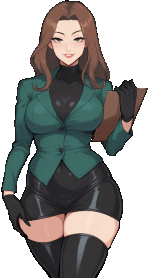Hey everyone. I rewrote my 10 year old program PalApply to support alpha masks and write well-optimized PNG output. I quietly released a replacement for the command line PalApply a year or two ago, but now I've gotten around to a full replacement for the GUI version that most people use.
Differences from the original PalApply, copied from the PalApply v2 readme:
- If the source image has non-trivial alpha (partial transparency), then in addition to the usual indexed image, PalApply v2 will save a corresponding alpha mask that can be used with OpenBOR's alphamask command.
- If the source image has any transparency at all, fully transparent pixels will be mapped to the transparent color (the first color in the palette).
The palette must be specified using an image file; there is no longer support for palettes in .pal/.act/.gpl format.- [since v2.0.1] The palette must be an image in PNG or GIF format or a palette in .act format; there is no longer support for palettes in .pal/.gpl format.
- All output is in PNG format. GIF, PCX, and BMP are still supported as input formats, just not for output.
- As a tradeoff for the above, the PNGs written by PalApply v2 are compressed to a small file size and optimized for fast loading. This is in sharp contrast to the poorly encoded PNGs written by the original PalApply, which were often larger than the equivalent GIFs.
- The user interface of PalApply v2 is similar to that of its predecessor, but is more polished in various ways.
- PalApply v2 is written in C rather than Java, so it doesn't require the Java runtime to be installed.
Everything else is about the same as the old PalApply; the interface is prettier but works the same. The only potentially contentious change is PalApply v2's inability to write GIF output. The only reason to use GIF over PNG is that GIFs load a bit faster, but the next release of OpenBOR will have my rewritten PNG decoder. With that, the optimized PNGs written by PalApply v2 load slightly faster than their GIF equivalents, so there will no longer be any reason to use GIF. If, in spite of all that, you still really want GIF output for whatever reason, you can still just use the original PalApply. It's not going anywhere.
With all that said, you can download PalApply v2 at the
GitHub releases page. It supports Windows and Linux, but for Linux you'll have to compile it yourself.
I'm not aware of any issues with it, but it hasn't been tested as much as the original PalApply, so let me know if you find any issues.
Enjoy! ;D

